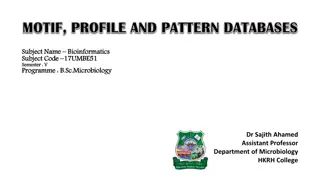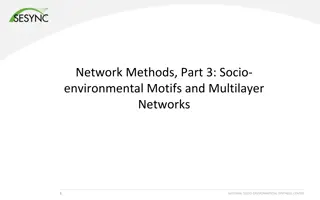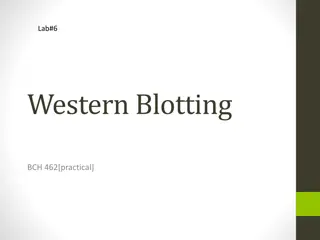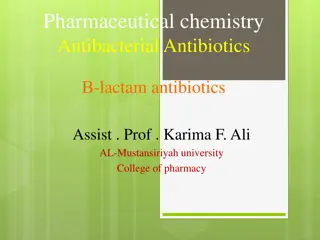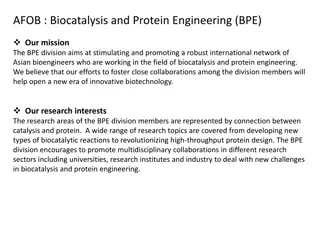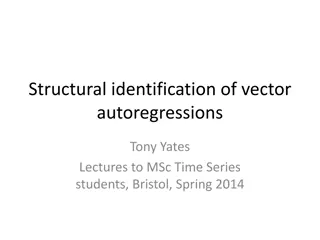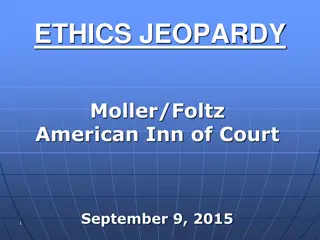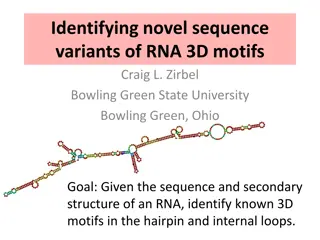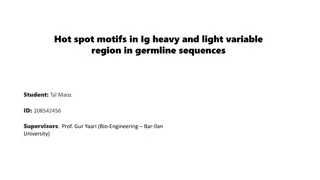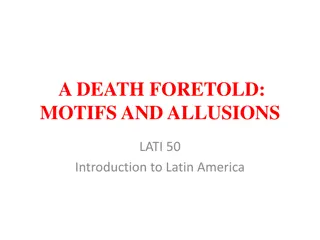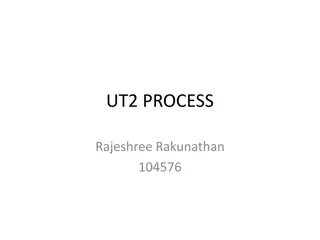Understanding Protein Structural Motifs: The Beta Turn
In the realm of protein structure, the beta turn plays a crucial role in folding patterns. This simple motif involves a 180-degree turn in the backbone, linking adjacent beta strands. Typically consisting of 2 to 5 amino acids, with glycine often at position 3 and proline at position 2, the beta turn influences the overall conformation and stability of proteins. By comparing the delta phi and delta psi values between Type I and Type II beta turns, we gain insights into their structural differences and functional implications.
Download Presentation

Please find below an Image/Link to download the presentation.
The content on the website is provided AS IS for your information and personal use only. It may not be sold, licensed, or shared on other websites without obtaining consent from the author. Download presentation by click this link. If you encounter any issues during the download, it is possible that the publisher has removed the file from their server.
E N D
Presentation Transcript
The -turn (1__ - 2 PRO -3 GLY - __ ) a simple protein structural motif generally found on protein surfaces turns the backbone around by 180 degrees to fold back on itself links two anti-parallel two beta strands that are adjacent in primary structure, that are adjacent in secondary structure is a short loop of two to five amino acids frequently contains glycine at position 3, (small H side chain allows extreme phi-psi). frequently contains proline at position 2, (P forces the backbone into the appropriate conformation)
Make a table of delta phi/delta psi, to compare type I and type II Figure 6-14



